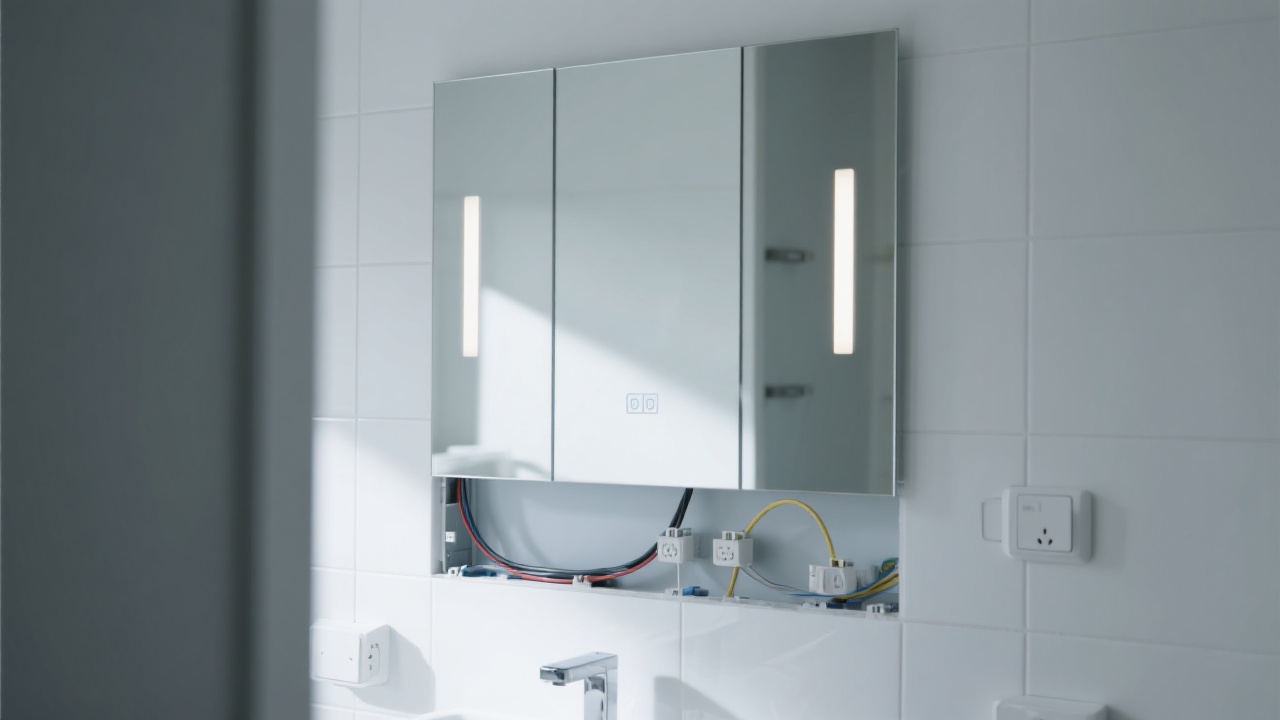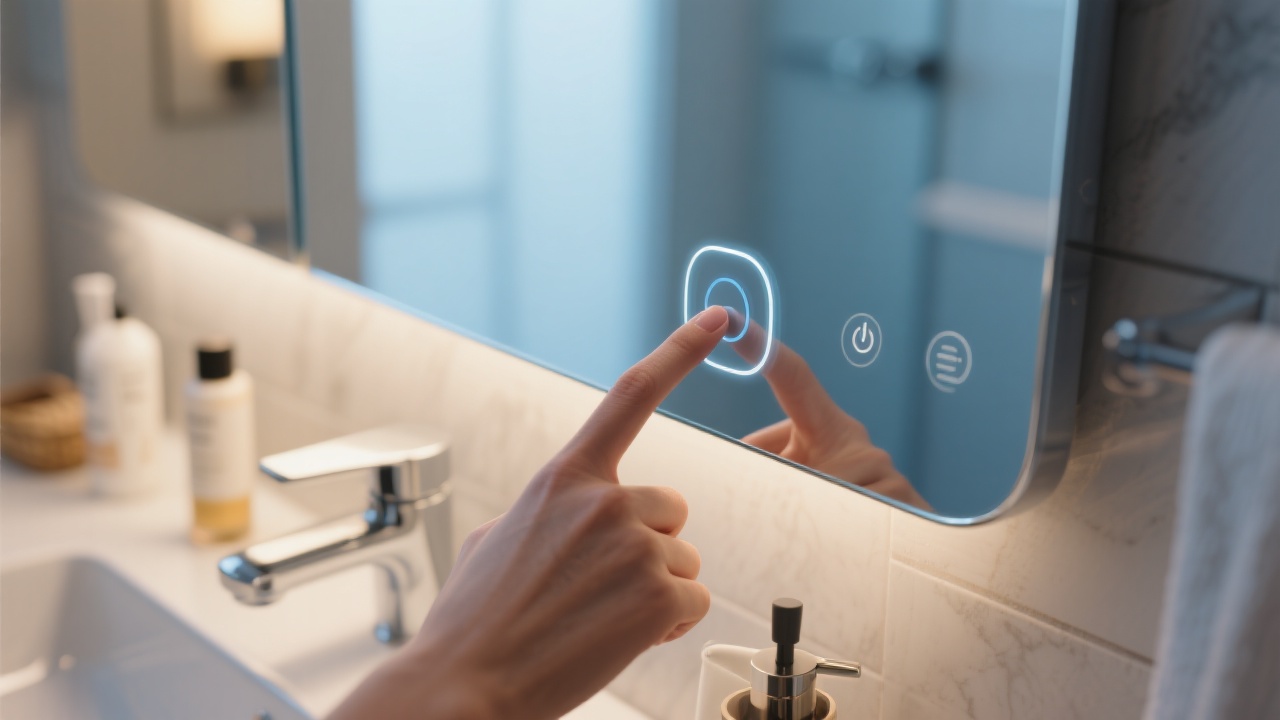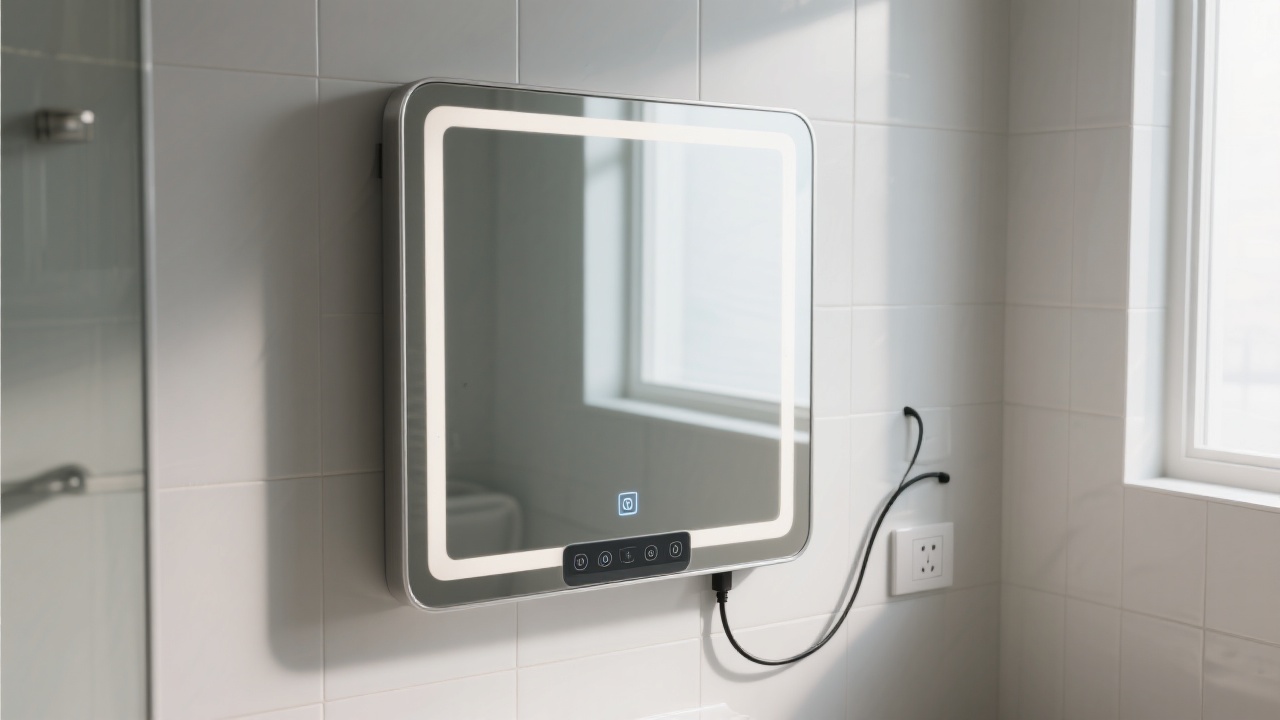
When it comes to bathroom mirrors, fogging is a common headache for many users. In the bathroom, the temperature difference between the warm, humid air and the cooler mirror surface causes water vapor to condense on the mirror, resulting in fogging. This not only affects the normal use of the mirror but also reduces the overall aesthetic of the bathroom. Let's take a look at several common anti - fog technologies.

This technology works by heating the mirror surface to keep it above the dew point temperature, preventing water vapor from condensing. For example, in a test of a bathroom with an average temperature of 25°C and a humidity of 80%, a heated anti - fog mirror can maintain a clear surface for more than 90% of the time during a 30 - minute shower. However, it consumes a certain amount of electricity, and improper installation may lead to uneven heating.
Nanocoating forms a super - hydrophilic film on the mirror surface. When water vapor condenses on the mirror, it spreads evenly into a thin layer of water instead of forming droplets, thus achieving the anti - fog effect. According to industry research, mirrors with high - quality nanocoatings can reduce fogging by about 80% compared to ordinary mirrors. But the coating may wear off over time, especially with frequent cleaning.
This is a more advanced technology. The mirror can sense the environmental humidity and temperature through sensors and automatically adjust the anti - fog function. For instance, in a smart bathroom project, the intelligent touch - sensing anti - fog mirror reduced user complaints about fogging by 95% within a month of use. However, the cost of this technology is relatively high, and the sensor may malfunction in a high - humidity environment.
When selecting an anti - fog mirror for the foreign trade market, you need to consider multiple factors. First, think about the target market's climate and user habits. For regions with high humidity, a more powerful anti - fog technology like heating dehumidification or intelligent touch - sensing may be more suitable. Second, pay attention to the design of the mirror. Modern bathroom design trends emphasize the combination of functionality and aesthetics. A mirror with a simple and stylish design can better meet the market demand.

Here is a simple comparison table of different anti - fog mirror products:
| Product Type | Anti - Fog Technology | Advantages | Disadvantages |
|---|---|---|---|
| Ordinary Heating Mirror | Heating Dehumidification | Good anti - fog effect | High energy consumption |
| Nanocoated Mirror | Nanocoating | Low cost, aesthetically pleasing | Coating may wear off |
| Intelligent Touch - Sensing Mirror | Intelligent Touch - Sensing | High - tech, automatic adjustment | High cost, potential sensor issues |
One common mistake is to only focus on the price and ignore the quality and anti - fog technology of the mirror. For example, some low - cost nanocoated mirrors may have poor anti - fog effects and short service lives. Another mistake is not considering the after - sales service. In case of mirror failure, timely and effective after - sales service can save a lot of trouble.

To avoid these mistakes, you should do some research before purchasing. Read user reviews and industry reports to understand the performance and reputation of different products. When choosing a supplier, select a company with a good reputation and strong technical support.
Among many anti - fog mirrors, the high - end Kidoir anti - fog intelligent LED mirror is a great choice. It combines heating dehumidification and intelligent touch - sensing technologies, with a stylish design that can meet the needs of the foreign trade market. The LED lighting around the mirror also enhances the overall atmosphere of the bathroom.
Do you have any specific requirements for bathroom anti - fog mirrors in your market? If you want to know more about the Kidoir anti - fog intelligent LED mirror, click here.











